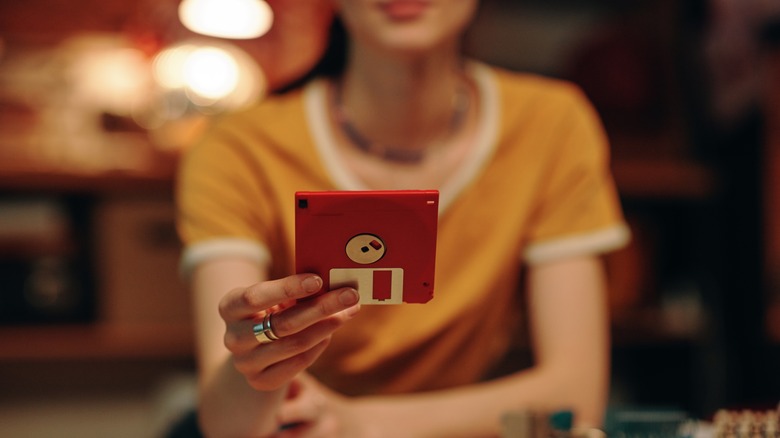
Pressmaster/Shutterstock
When you think about retro music formats, floppy disks may not immediately be top of mind. They’re not as culturally iconic as cassette and CD players or as elegant as old-school vinyl. But for a number of dedicated musicians and listeners, floppy disks have inspired a surprising modern movement.
Despite being a revolutionary tech device in its day, the floppy disk lost much of its initial utility as computers became more powerful and data storage needs increased. Typically, the 3.5″ floppy disk has a standard data capacity of 1.44MB, but higher-density models like the Imation SuperDisk can hold up to 120MB. With a minute of audio clocking in at around 1MB, you might only fit a single track on a standard floppy disk (unless you use special configurations). This is a far cry from the millions of tracks you can access from the palm of your hand via streaming platforms like Spotify or Apple Music.
It’s arguable, though, that these little inconveniences are part of the little square’s charms, especially for those in the underground music scene. Despite the unique challenges of the medium, like how many people no longer have access to drives that can read them, the cultural phenomenon of floppy disk music culture has stood the test of time so far.
Floppy disks and underground music
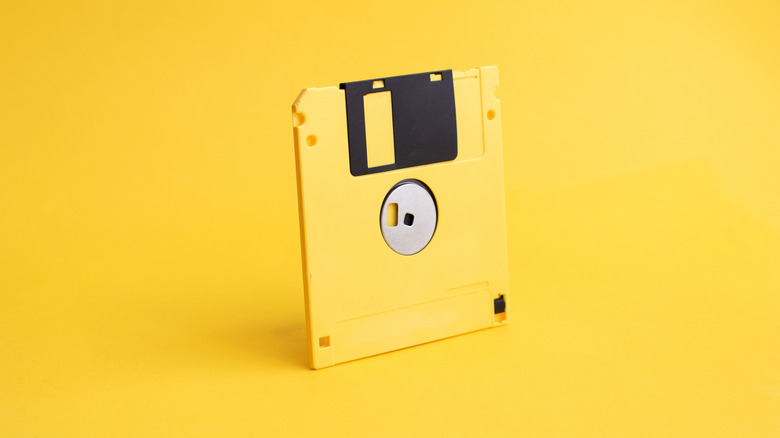
Epov Dmitry/Shutterstock
In many ways, the floppy disk thrived in between the worlds of the cassette tape and the CD, offering an early glimpse of what could be possible with the digital experience. In 1995, Sony released «Music Screeners» on 3.5″ floppy disks for artists like Michael Jackson, Gloria Estefan, Céline Dion, and Cyndi Lauper. Although these screeners didn’t include full videos, some of them did include short clips and programmable screensaver options.
In the years that followed, floppy disks made a home for themselves in the shadow of the music industry, generally surviving in niche electronic and dance genres. A floppy disk-focused music festival, Floppy Totaal, began in Rotterdam in 2014. Throughout the 2000s, floppy drive emulators grew in popularity, which added a layer of practicality to the floppy disk music creation experience.
In 2016, BadBadNotGood’s label used floppy disks for a guerrilla marketing campaign when it released a bonus track, «UP,» via floppy disks in locations around the world for dedicated fans. In a Rolling Stone interview, Jamie Strong, Innovative Leisure co-founder, claimed that this trick worked pretty well, citing resales of the floppy disks selling online for at least $40.
Why floppy disks work for artists
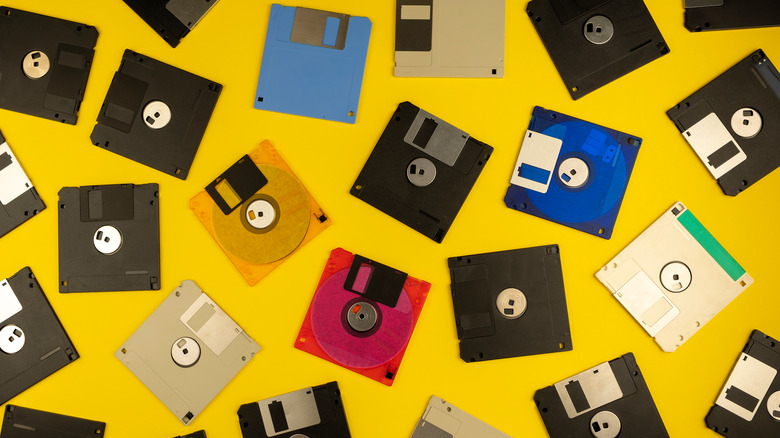
Real_life_photo/Shutterstock
As of February 2024, there are over 2,000 floppy disk releases listed on Discogs, mostly featuring different styles of electronic music. The most popular style listed for floppy disk music on Discogs is noise, but there are also many examples from subgenres like experimental, ambient, abstract, and vaporwave.
The allure of floppy disks isn’t just that they’re nostalgic technological relics. Their limitations can also contribute to the end result. In a 2024 interview with The Verge, musician Kai Nobuko explained that the process itself is very unique on floppy. «I had to do quite a lot of experimenting with lobit encoding to be able to make the music sound good (to my ears),» Nobuko said, «and also to optimize the space of the floppy to contain around 10 minutes of music in which the sounds were listenable and distinguishable.»
«Floppies are cheaper than cassettes,» Matthew Isom of San Diego-based vaporwave label Power Lunch told Rolling Stone in 2018. «They don’t have to be tediously dubbed, they look appealing, they’re available in a lot of colors and have cool designs that people like.» Isom also mentioned that compared to cassettes, floppy disks are cheaper to ship internationally. However, many artists who produce floppy disk music are aware that floppies may not stand the test of time. They’re not exactly designed to be a long-term storage solution, and they’re vulnerable to magnets, poor storage practices, extreme temperatures, and rough handling.
The future of floppy disk music
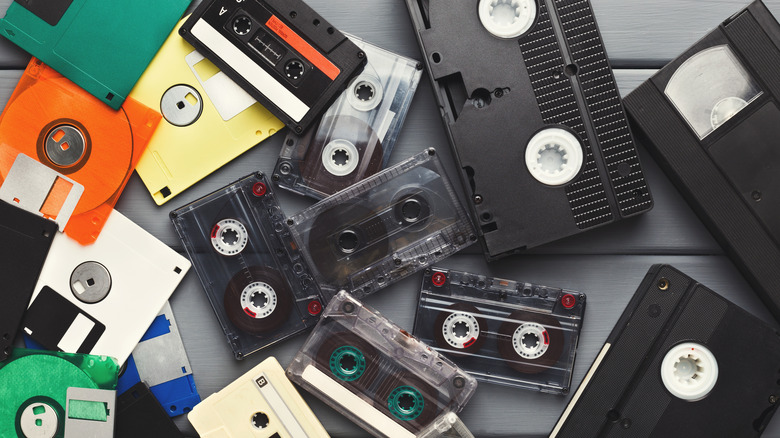
Prostock-studio/Getty Images
While they’re not as ubiquitous as they once were, there are still many types of legacy technology and important industries that rely on floppy disks, especially in the fields of medicine and air travel. For this reason, there are still entire websites, like floppydisk.com, where you can buy floppy disks in different pack sizes and colors. Despite some models being discontinued by manufacturers, you can still snag brand-new floppy disks on Amazon.
Knowing this adds a bit of hope for this subculture. By having some sort of remaining utility in the «practical» world, it buys underground floppy disk music aficionados more access to their medium of choice. Unsurprisingly, floppy disks aren’t the only legacy format gaining traction again in recent times. In 2021, Statista reported that 82,000 vinyl turntables were sold in the United States alone — 10% more than the preceding year. In the 2022 Year-End Music Industry Revenue Report, the Recording Industry Association of America even claimed that vinyl outsold CDs for the first time in 35 years.
Floppy disks and the culture of slow listening
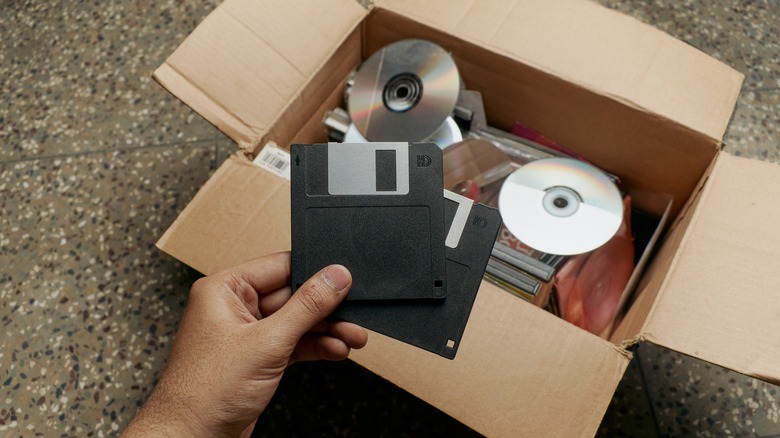
Gireesh R Pai/Shutterstock
For people growing up in the age of streaming, the idea of owning music may be a foreign concept. On the surface, there’s very little reason to go through the hassle of buying anything physical when you can simply access it online. However, there are many reasons to support physical media, from the risk of losing digital access to supporting your favorite artists, who may not be paid much on streaming platforms. Or, maybe you just want to enjoy your music more intentionally.
In a world where convenience is king, it can be easy to get overwhelmed with endless choices. Formats like floppy disks, which can sometimes only house a single track, beg the listener to treat music the way we look at art in a museum — with dignity. Although it’s unclear how many years the underground floppy disk music industry has left, its appeal and importance in the larger music industry is clear.